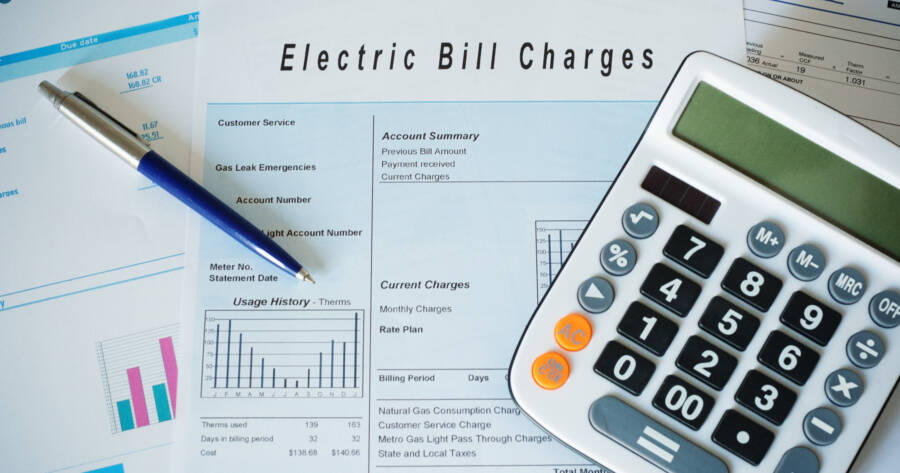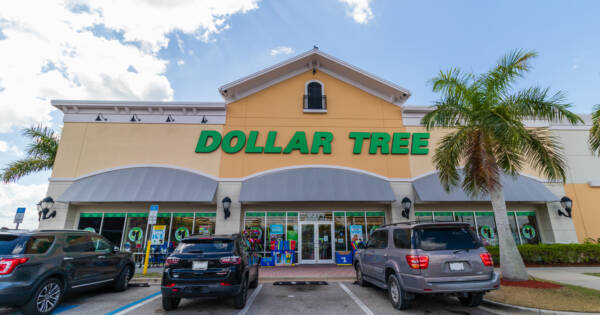For homeowners and renters who pay their own utility bills, electricity represents a significant and often unpredictable monthly expense. In the United States, people spend an average of about 2% to 3% of their annual earnings on electricity. That’s a decent chunk of change, and it’s little wonder that people are always looking for ways to reduce their energy consumption. Beyond the obvious financial benefits, cutting back on electricity use also benefits the environment.
With that in mind, let’s examine 15 ways you can trim household electricity usage and lower your monthly energy costs.
15. Get a Programmable Thermostat
Programmable thermostats give you precision control over home heating and cooling cycles. They also allow you to create heating and cooling schedules that ensure your home is comfortable all day long and in every season without wasting energy. Some smart systems can also be remotely controlled over the internet, allowing you to override set programs when you’re on the road or at work.
14. Invest in Fluorescent or LED Bulbs
Beyond the obvious energy-saving strategy of turning off the lights when you aren’t using them, you can also swap out wasteful incandescent light bulbs for more efficient alternatives. According to an analysis published by Forbes, you could save more than $120 a year by substituting 10 incandescent 60-watt bulbs for fluorescent ones. LED bulbs offer similar savings and last even longer, but usually cost a little more up front.
13. Use Dimmers
Traditional switches give you two options: full power or no power at all. Dimmers offer a more flexible alternative by allowing you to adjust lighting with greater control. To save electricity and money, just turn down the dimmer to reduce brightness.
12. Unplug Appliances You Aren’t Using
Electrical appliances always draw a small charge when they’re plugged in, even if they’re not in use. This energy usage may seem negligible when you consider only one appliance, but if you think about everything in your home that you keep plugged in even when you’re not using it, you’re suddenly talking about real savings. Unplug things like toasters, laptop computers and smartphones, kettles, electric razors and toothbrush chargers, curling irons, lamps, food processors, and the like.
11. Repair Drafty Ductwork
If you’ve got old, drafty ducts, you could be squandering 10% to 25% (or more) of your home heating and cooling costs. Drafty ductwork allows conditioned air to escape before it’s delivered, amounting to avoidable waste. Seal the drafts to give your system’s efficiency a helpful boost.
10. Upgrade Your Windows and Doors
Like ductwork, leaky windows and doors can cause major household energy inefficiencies. In the winter, they allow heat to escape, forcing you to pay more to warm your home. In the summer, they allow hot and humid outdoor air to seep inside, thus making your A/C work harder to achieve the desired indoor temperature.
While this fix requires an upfront investment, it will pay dividends for years. Energy-efficient windows and doors also boost your home’s resale value.
9. Add Insulation
Insulation improves household energy efficiency year-round by inhibiting heat transfer. It keeps warmth trapped inside during the winter while preventing the outdoor heat from penetrating your home in the summer. U.S. residents can use this helpful map to determine how much insulation they need for their climate zone.
8. Optimize Your Fridge and Freezer Temperatures
If your fridge and freezer are at their coldest settings, you’re using more energy than you need. Fridges can safely be set at 38 degrees Fahrenheit (3.33 degrees Celsius) while freezers optimize at 5 degrees Fahrenheit (-15 degrees Celsius).
7. Dial Down Your Water Heater
Most water heaters are activated to their default settings, which heat water to a scalding 140 degrees Fahrenheit (60 degrees Celsius). You’ll almost never need water that hot out of the faucet. Instead, set yours so your hot water maxes out at 120 degrees Fahrenheit (48.9 degrees Celsius). That adjustment alone will net you about 10% savings on your water heating costs.
6. Get an Energy-Efficient Showerhead
Upgrading to an energy-efficient showerhead can help you save thousands of gallons of water per year. You could stop hundreds of dollars from going down the drain in the form of needless water heating costs. To complete your bathroom, you could also install low flush toilets that will further decrease your water usage. Some places offer cash rebates or price incentives for these efficient upgrades, so they may not be as expensive as you originally thought.
5. Use Fans Instead of A/C
Strategically positioned fans can eliminate the need to run your air conditioner on all but the hottest days. Combine oscillating standing fans with ceiling fans to create robust airflow in your home, keeping things feeling cool and drafty for a fraction of the cost. Here’s how to do it, according to Popular Science magazine.
4. Replace Aging Appliances
Old appliances use far more energy than new ones, partially because inefficiencies naturally result from aging but also because emerging technologies are better at conserving electricity. If major appliances like your refrigerator-freezer, washer-dryer, dishwasher, and oven are more than 10 years old or constantly require repairs, chances are the math works out in favor of replacing them with new, more efficient models.
3. Wash Your Clothes in Cold Water
The vast majority of garments don’t need to be washed in hot water to meet care guidelines. Unless you need hot water to help remove set-in stains, make cold the default setting on your washing machine and save up to $12 a month. On a related note: get in the habit of hang-drying your laundry rather than using your dryer. It’s also better for your clothing, as heat causes fabrics to wear down more quickly.
2. Get a Professional Energy Audit
Many reputable HVAC companies offer home energy audits, in which a technician brings precisely calibrated measuring instruments to your home to test its energy efficiency. These tests consider factors like the integrity of your home’s building envelope, checking for leaks and drafts. It will also evaluate appliance efficiency and many other factors that contribute to your household energy consumption.
The results of the audit’s findings will help you pinpoint the most effective improvements you can make. If you’re not sure where to start saving, an audit will help you figure it out. Though we recommend professionals, you can also perform one yourself in a pinch.
1. Know Your Local Rate Schedule
A growing number of energy companies have introduced sliding rates that charge consumers more to use electricity at peak times of day. Take advantage of cheaper energy by performing electricity-intensive tasks, like using the oven and washing and drying clothes, at off-peak times of day. You won’t be able to shift all your electricity consumption away from peak hours, but smart adjustments can lead to big savings. Your dishwasher, washing machine, or dryer might have a start timer, for example, that allows it run in the middle of the night when energy is cheaper.
The Last word
If you have multiple utility providers that serve your area, research may indicate that electricity costs are similar no matter which company you use. However, this isn’t always true, especially if time-of-day policies are in place. Thus, you can also look for potential savings by gathering price quotes from different electric companies.
You can use internet-based tools to quickly compare offers and rates in your area, with the simplest such tools displaying average rates for households with usage profiles that match yours. If possible, gather all your electricity bills from the past year so you can see how your consumption varies from season to season, then use it to generate an accurate estimate of your overall usage to enter into pricing queries.
 Shutterstock
Shutterstock







